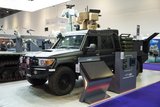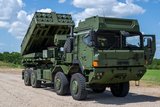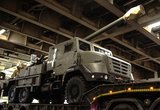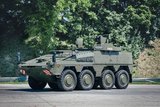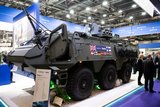How the Ukraine war is shifting the US Army’s EW capabilities
Camouflaged Mobile Command Post vehicles blend in during a CPI2 limited user test. (Photo: US Army)
The US Army has been changing its requirements for EW acquisition and modernisation programmes based on lessons learned from the Ukraine war. Since its beginning, the conflict has shown how command, control and communications (C3) systems can put warfighters and capabilities in a vulnerable position.
It has been leading the branch towards allocating billions of dollars to the acquisition and development of reliable communications and solutions to avoid detection and mitigate the threat from enemy indirect fire. This approach includes investments in new designs and in the modernisation of in-service inventory.
“The way that the army does command and
Already have an account? Log in
Want to keep reading this article?
More from Land Warfare
-
![Croatia orders Leopards and CAESAR howitzers as Lithuania orders more CAESARs]()
Croatia orders Leopards and CAESAR howitzers as Lithuania orders more CAESARs
The Leopard is becoming the tank of choice in central and eastern Europe as Croatia joins Lithuania, the Czech Republic and Hungary in ordering the platform. Lithuania and Croatia have also signed for CAESAR howitzers.
-
![Lockheed Martin to look further afield for GMARS rocket system opportunities]()
Lockheed Martin to look further afield for GMARS rocket system opportunities
The HX truck is already in use in many NATO and allied countries around the world as a logistics vehicle and carrier for high-value systems, including missile firing weapons, so its use for the Global Mobile Artillery Rocket System makes logistical sense.
-
![Lithuanian 1st Division to achieve initial operating capability in 2026]()
Lithuanian 1st Division to achieve initial operating capability in 2026
Lithuania is one of the countries stepping up its defences in the face of the war in Ukraine with a particular focus on its neighbour and Russian ally Belarus, which has been making incursions into Lithuania’s airspace with balloons and drones.
-
![Beyond Survivability: How Active Protection Systems Are Empowering Commanders (Podcast)]()
Beyond Survivability: How Active Protection Systems Are Empowering Commanders (Podcast)
As threats diversify and intensify, APS are proving essential not just for vehicle protection but also for enhancing operational freedom, effectiveness and mission success in contested environments.
-
Medium knocked out of British Army LMP, with CAVS as heavyweight champion
As the British Army seeks to modernise and consolidate its diverse vehicle fleet, yet another change in direction is underway.











